Yiming Huo
Technology Trends for Massive MIMO towards 6G
Jan 05, 2023



Abstract:At the dawn of the next-generation wireless systems and networks, massive multiple-input multiple-output (MIMO) has been envisioned as one of the enabling technologies. With the continued success of being applied in the 5G and beyond, the massive MIMO technology has demonstrated its advantageousness, integrability, and extendibility. Moreover, several evolutionary features and revolutionizing trends for massive MIMO have gradually emerged in recent years, which are expected to reshape the future 6G wireless systems and networks. Specifically, the functions and performance of future massive MIMO systems will be enabled and enhanced via combining other innovative technologies, architectures, and strategies such as intelligent omni-surfaces (IOSs)/intelligent reflecting surfaces (IRSs), artificial intelligence (AI), THz communications, cell free architecture. Also, more diverse vertical applications based on massive MIMO will emerge and prosper, such as wireless localization and sensing, vehicular communications, non-terrestrial communications, remote sensing, inter-planetary communications.
Distributed Reconfigurable Intelligent Surfaces for Energy Efficient Indoor Terahertz Wireless Communications
Oct 12, 2022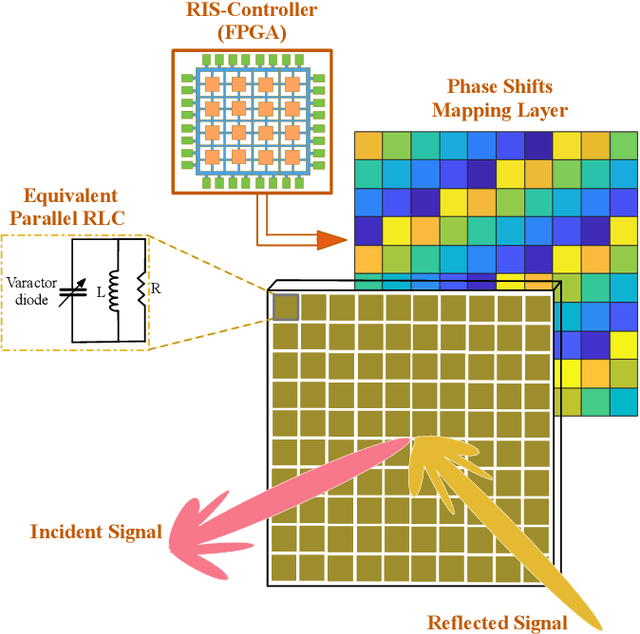
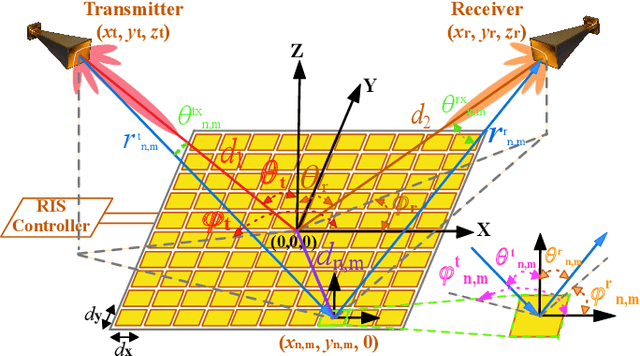
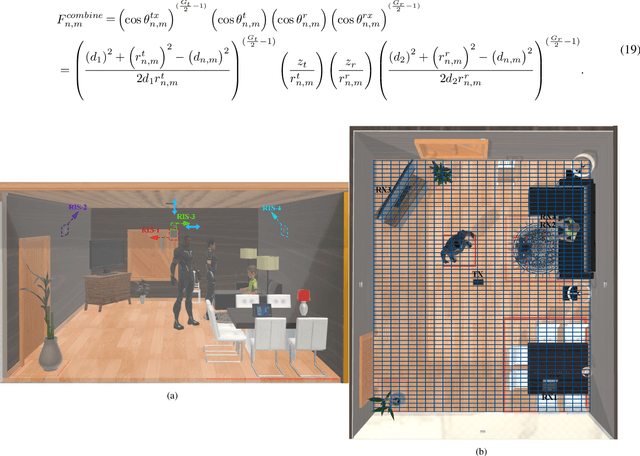
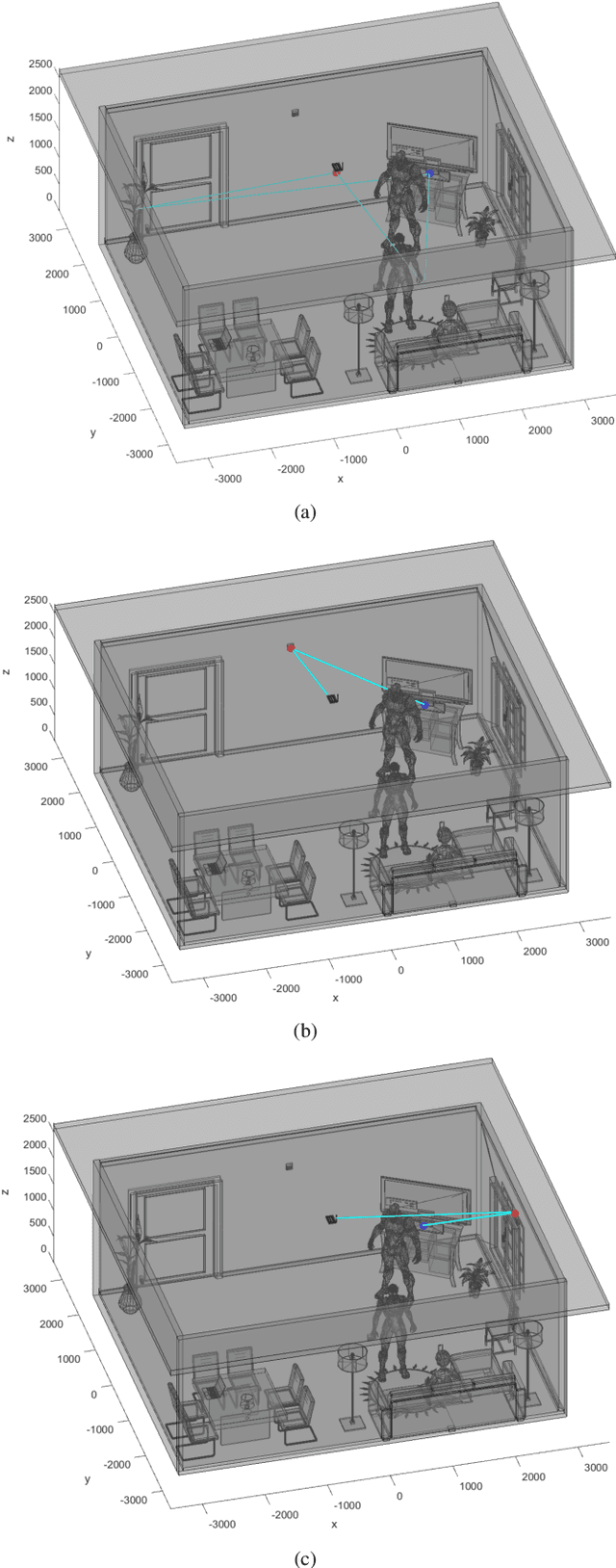
Abstract:With the fifth-generation (5G) networks widely commercialized and fast deployed, the sixth-generation (6G) wireless communication is envisioned to provide competitive quality of service (QoS) in multiple aspects to global users. The critical and underlying research of the 6G is, firstly, highly dependent on the precise modeling and characterization of the wireless propagation when the spectrum is believed to expand to the terahertz (THz) domain. Moreover, future networks' power consumption and energy efficiency are critical factors to consider. In this research, based on a review of the fundamental mechanisms of reconfigurable intelligent surface (RIS) assisted wireless communications, we utilize the 3D ray-tracing method to analyze a realistic indoor THz propagation environment with the existence of human blockers. Furthermore, we propose a distributed RISs framework (DRF) to assist the indoor THz wireless communication to achieve overall energy efficiency. The numerical analysis of simulation results based on more than 2,900 indoor THz wireless communication sub-scenarios has demonstrated the significant efficacy of applying distributed RISs to overcome the mobile human blockage issue, improve the THz signal coverage, increase signal-to-noise ratios (SNRs), and QoS. With practical hardware design constraints investigated, we eventually envision how to utilize the existing integrated sensing and communication techniques to deploy and operate such a system in reality. Such a distributed RISs framework can also lay the foundation of efficient THz communications for Internet-of-Things (IoT) networks.
Internet of Spacecraft for Multi-planetary Defense and Prosperity
May 16, 2022



Abstract:Recent years have seen unprecedentedly fast-growing prosperity in the commercial space industry. Several privately funded aerospace manufacturers, such as Space Exploration Technologies Corporation (SpaceX) and Blue Origin have innovated what we used to know about this capital-intense industry and gradually reshaped the future of human civilization. As private spaceflight and multi-planetary immigration gradually become realities from science fiction (sci-fi) and theory, both opportunities and challenges are presented. In this article, a review of the progress in space exploration and the underlying space technologies is firstly provided. For the next, a revisit and a prediction are paid and made to the K-Pg extinction event, the Chelyabinsk event, extra-terrestrialization, terraforming, planetary defense, including the emerging near-Earth object (NEO) observation and NEO impact avoidance technologies and strategies. Furthermore, a framework of the Solar Communication and Defense Networks (SCADN) with advanced algorithms and high efficacy is proposed to enable an internet of distributed deep-space sensing, communications, and defense to cope with disastrous incidents such as asteroid/comet impacts. Furthermore, the perspectives on the legislation, management, and supervision of founding the proposed SCADN are also discussed in depth.
Joint Time and Power Allocation for 5G NR Unlicensed Systems
Apr 22, 2021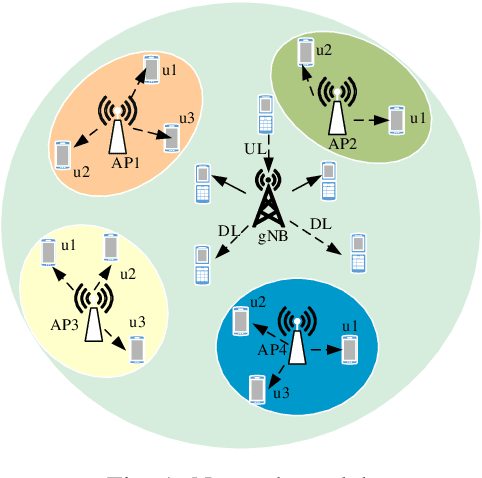

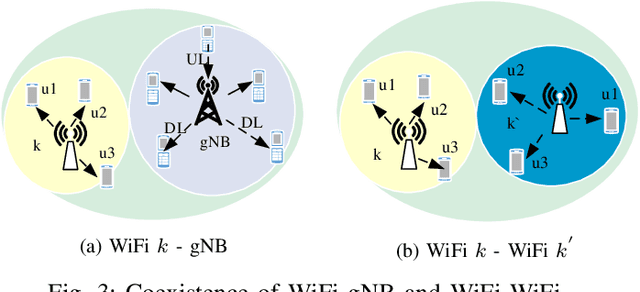
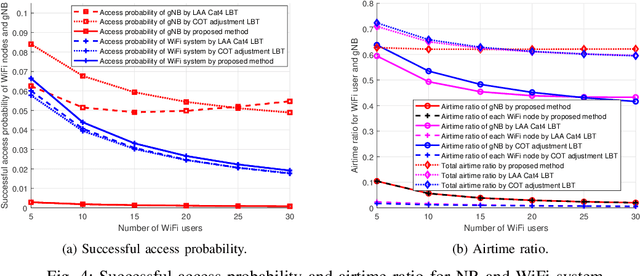
Abstract:The fifth-generation (5G) and beyond networks are designed to efficiently utilize the spectrum resources to meet various quality of service (QoS) requirements. The unlicensed frequency bands used by WiFi are mainly deployed for indoor applications and are not always fully occupied. The cellular industry has been working to enable cellular and WiFi coexistence. In particular, 5G New Radio in unlicensed channel spectrum (NR-U) supports the uplink and downlink transmission on the maximum channel occupation time (MCOT) duration. In this paper, we consider maximizing the total throughput of both downlink and uplink in NR-U by jointly optimizing the time and power allocation during MCOT while ensuring fair coexistence with WiFi. Fairness is guaranteed in two steps: 1) tuning the access related parameters of NR-U to achieve proportional fairness, and 2) including 3GPP fairness from the throughput perspective as a constraint in NR-U throughput maximization. Numerical analysis and simulation have demonstrated the superior performance of the proposed resource allocation algorithm compared to conventional deployment strategies.
Meteorologically Introduced Impacts on Aerial Channels and UAV Communications
Apr 14, 2021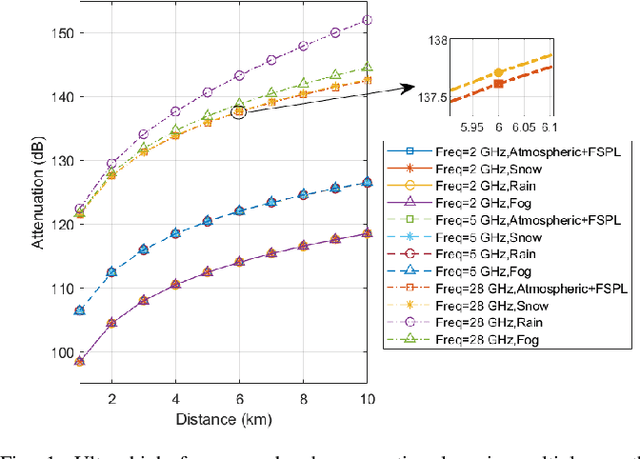
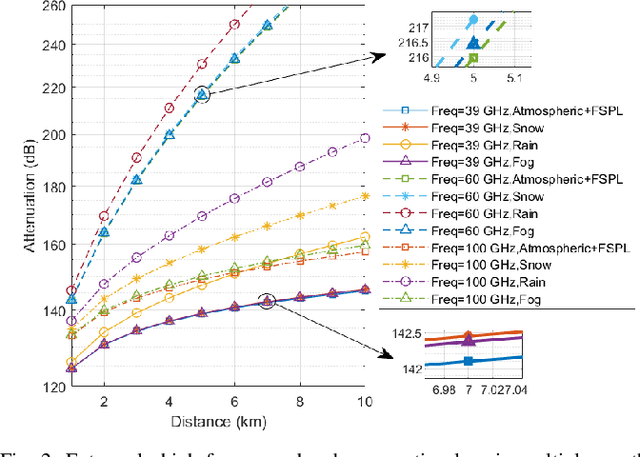
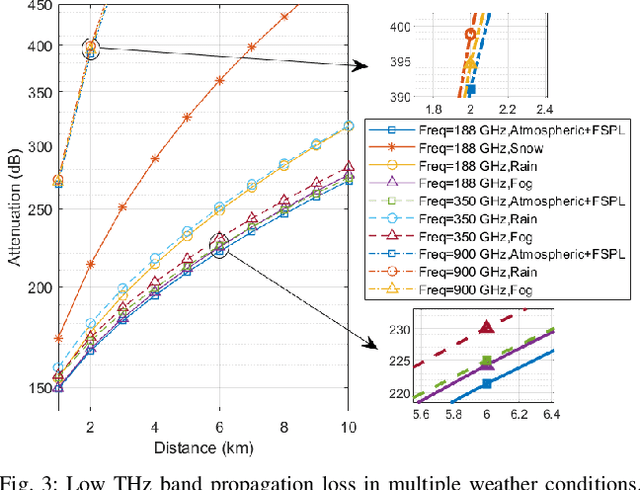
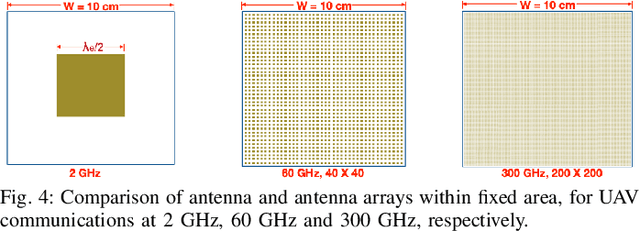
Abstract:As 5G wireless systems and networks are now being globally commercialized and deployed, more diversified application scenarios are emerging, quickly reshaping our societies and paving the road to the beyond 5G (6G) era when terahertz (THz) and unmanned aerial vehicle (UAV) communications may play critical roles. In this paper, aerial channel models under multiple meteorological conditions such as rain, fog and snow, have been investigated at frequencies of interest (from 2 GHz to 900 GHz) for UAV communications. Furthermore, the link budget and the received signal-to-noise ratio (SNR) performance under the existing air-to-ground (A2G) channel models are studied with antenna(s) system considered. The relationship between the 3D coverage radius and UAV altitude under the influence of multiple weather (MW) conditions is simulated. Numerical results show that medium rain has the most effects on the UAV's coverage for UAV communications at millimeter wave (mmWave) bands, while snow has the largest impacts at near THz bands. In addition, when the frequency increases, the corresponding increase in the number of antennas can effectively compensate for the propagation loss introduced by weather factors, while its form factor and weight can be kept to maintain the UAV's payload.
 Add to Chrome
Add to Chrome Add to Firefox
Add to Firefox Add to Edge
Add to Edge